Infrastructure Equity
 Mirova: Private Assets Annual Market Review & Outlook
Mirova: Private Assets Annual Market Review & Outlook
Mirova's annual market review and 2024 outlook for private assets.
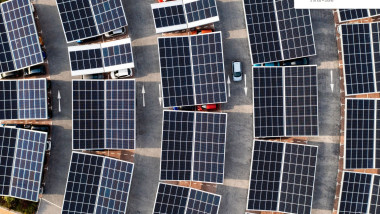 2024 Preqin Global Report Infrastructure: Mirova
2024 Preqin Global Report Infrastructure: Mirova
Mirova shares their views on energy transition infrastructures in Preqin’s 2024 Global Report on Infrastructure.
 Vauban Infrastructure Partners’ Car Park Management Strategy
Vauban Infrastructure Partners’ Car Park Management Strategy
Why car park infrastructure will continue to be an essential asset for the future of local mobility.
 Energy Transition: Innovation Gives Way To Consolidation
Energy Transition: Innovation Gives Way To Consolidation
Higher interest rates leads Mirova to focus on asset performance optimisation after intense pioneering period.
 Across the Universe #2 - The Energy Transition
Across the Universe #2 - The Energy Transition
In this second edition of 'Across the Universe', Hervé Guez, Raphaël Lance, and Marc Romano from Mirova, discuss the strategic role of investors in channeling financing towards innovation and solutions for the energy transition.
 Mirova Energy Transition Infrastructure
Mirova Energy Transition Infrastructure
Read Mirova’s Impact Report 2022.
 A Core Comeback
A Core Comeback
Appetite for core infrastructure is soaring as investors seek a safe harbour in a storm, says Vauban CEO and founder Gwenola Chambon.
 Vauban’s Waste Management Market Strategy
Vauban’s Waste Management Market Strategy
Investing in French's sustainable energy transition sector in the future.
 Infrastructure: Why Investing Over The (Very) Long Term Is Worth The Wait
Infrastructure: Why Investing Over The (Very) Long Term Is Worth The Wait
For investors willing to commit for 15 or more years, the financial and non-financial rewards from essential infrastructure assets are compelling.
 Impossible Emissions
Impossible Emissions
We are still placing too much hope in carbon capture technologies and offsetting mechanisms, but it is increasingly urgent to electrify our uses, to decarbonize the electricity produced and more generally, to adopt the innovative and virtuous solutions that are already available.
 Time to Shift for Insurers: Investing in Private Assets (3/3)
Time to Shift for Insurers: Investing in Private Assets (3/3)
In today’s low rate environment, insurers are allocating more and more to private assets.
 Infrastructure For Climate
Infrastructure For Climate
Facing global warming, a study jointly conducted by Vauban IP and Altermind argues for accelerating the transition towards sustainable, low carbon and climate-resilient infrastructures through comprehensive and value-driven climate strategies.
 Solving The Private Markets Conundrum for UK DC
Solving The Private Markets Conundrum for UK DC
DC members and smaller DB schemes get long-awaited access to illiquid assets.
 Three Considerations for Insurers Weighing an EM Corporate Debt Allocation
Three Considerations for Insurers Weighing an EM Corporate Debt Allocation
Are insurers making a mistake when it comes to their paltry allocation to emerging market (EM) Corporate Debt? Loomis Sayles thinks so.
 The Case for Core Infrastructure
The Case for Core Infrastructure
Insurers benefit from long-horizon income, low volatility and reduced capital charge.
 Renewable Energy in Light of Grid Parity
Renewable Energy in Light of Grid Parity
The gradual reduction of public support measures is ushering renewable energies into a new era; that of autonomy on electricity trading markets.
 Investor Portfolio Alignment with the Paris Agreement: a Multi-Sector, Multi-Asset Class Approach
Investor Portfolio Alignment with the Paris Agreement: a Multi-Sector, Multi-Asset Class Approach
S&P Trucost and Natixis IM Solutions detail the extension of the 2°C alignment assessment methodology to private and illiquid asset classes in order to obtain consistent multi-sector, multi-asset class analyses.
 Renewable Infrastructure as an Asset Class
Renewable Infrastructure as an Asset Class
One of the most important challenges for institutional investors is to deploy large amounts of capital and manage increasingly high liability commitments in an environment of low-yielding opportunities.
 Green Hydrogen, A Catalyst for the Energy Transition
Green Hydrogen, A Catalyst for the Energy Transition
A multipurpose gas with outstanding energy properties: per kilo, as it contains 2.2 times more energy than natural gas, 2.75 times more than petrol and three times more than crude oil.
 Infrastructure: the Rise of an Asset Class
Infrastructure: the Rise of an Asset Class
In a Q&A, Gwenola Chambon, chief executive of Vauban Infrastructure Partners, explains how infrastructure became a portfolio staple.
 The Era of Infrastructure 4.0
The Era of Infrastructure 4.0
How digitalization can help infrastructure to answer the challenges of the post-Covid-19 world?
 Financing the Necessary Ecological Transition of Transport
Financing the Necessary Ecological Transition of Transport
The energy, industry, buildings and transport sectors together currently account for three quarters of global greenhouse gas emissions, with mobility alone representing no less than 24% of CO2 emissions caused by energy combustion.
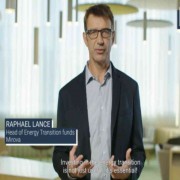 Investing in Infrastructures to Accelerate Energy Transition
Investing in Infrastructures to Accelerate Energy Transition
Essential, profitable, tangible, mature: all these features explain the growing interest of institutional investors in green infrastructures.
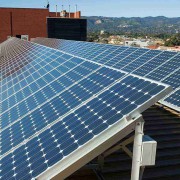 “The Green Sector has been Less Affected than Other Infrastructure”, says Mirova
“The Green Sector has been Less Affected than Other Infrastructure”, says Mirova
In this Clear Path Analysis report, Mirova expert elaborates on how the pandemic crisis may energise infrastructure and where are the opportunities in next generation energy infrastructure.
 Opportunities in Next-Generation Energy Infrastructure
Opportunities in Next-Generation Energy Infrastructure
Investment opportunities in the energy transition are no longer limited to the mature solar and wind segments.
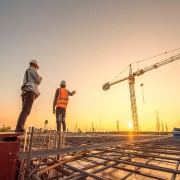 Vauban’s Core Infrastructure Financing
Vauban’s Core Infrastructure Financing
Creating value and enhancing asset resilience with a long-term approach.
 Building Infrastructure Portfolios for the Long-Term
Building Infrastructure Portfolios for the Long-Term
Fundraising for private infrastructure funds is booming. In 2018, $80billion were raised in closed-ended Infrastructure funds and funds raised are increasingly ending-up in fewer hands.
 Infrastructure: Let’s Get Personal
Infrastructure: Let’s Get Personal
Infrastructure is unlike other asset classes. It has a direct impact on people’s lives, facilitating the functioning of critical activities without which everyday life would grind to a halt.
 Energy Transition: Clean Investments for Yield-hungry Investors
Energy Transition: Clean Investments for Yield-hungry Investors
Renewable energy is one of the fastest growing segment within the infrastructure market.
 European Broadband Networks
European Broadband Networks
On top of favoring sustainable development, broadband networks are true infrastructure investment opportunities.
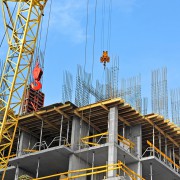 Equity Infrastructure: Decorrelated, Long-term Income
Equity Infrastructure: Decorrelated, Long-term Income
Allocations to infrastructure assets are rising fast, so specialist skills are required to maintain outperformance and manage risk.




